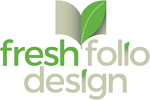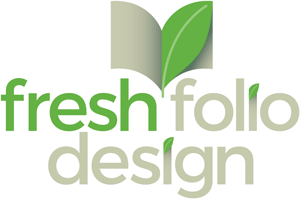It’s no secret I’ve got a bit of a sweet tooth. I’m not going to say I can’t control myself, but it may be for the best if I’m not left alone for too long with a plate of goodies and nothing else to do. (Honestly, Dean, I think they shorted us on Girl Scout cookies.) However, a recent trip to Dunkin’ Donuts (purely for research purposes) got me thinking about how donuts provide a great visual for our topic this week.
We’ve been following the path of creating a great brochure. Once the design is complete there are final decisions to be made regarding the finishing of your piece. “Finishing” is a term used in printing for the various value-added operations that can be performed after ink has been applied to paper.
Finishing and Bindery, as many printers refer to this step, includes a variety of techniques that may be used in your finished brochure. One way to think of the various options within Finishing and Bindery is that it will either be a functional, or a quality, enhancement to the final piece.
Bringing it on back to my donut analogy, think of a basic cake donut as a standard brochure; printed, trimmed, folded and bound. It can work perfectly well as is. However, there is also the potential to add Enhancements, like frosting, sprinkles, glazing. Let’s use the labels Functional and Enhancement to categorize and define some terms providing a better understanding of the possibilities for your brochure.
FUNCTIONAL FINISHING
When a brochure is printed your file is set up to maximize the space on the paper. You want very little, if any, waste or unused paper. However, once printing is complete you then have flat sheets of paper that do not resemble a functional brochure until it goes through a few additional steps.

Cutting and Trimming: A sharp blade is used to remove excess paper along crop marks, separating pieces that have been printed on the same sheet, or trimming edges, to create evenly aligned pages.
Collating: The gathering and arranging of individual sheets into a predetermined order to create the sequence of pages as they were designed.
Scoring: The process of making a crease in paper so that it will fold easier. This is usually needed for heavier weights of paper to give a better appearance to the fold.
Folding: The process of bending a printed page so it will lie flat upon itself. This step is necessary in order to create the pages of a brochure.
BINDING
The final part of Functional Finishing we will look at is binding. Not every brochure will need binding. If your brochure solution is a single, folded sheet, there is no need for binding. However, as soon as there are multiple pages then binding needs to occur to hold those pages together.
There are two types of binding that we will look at since a majority of brochures utilize one of these bindings. They are referred to as “Saddle Stitch” and “Perfect Bound”.
Saddle Stitch: A binding method where folded sheets are gathered together, one inside the other, and then stapled through the fold line with wire staples.

The term Saddle Stitch is a bit bizarre, but understanding where the name comes from can help identify this type of binding. In the print industry, stapling is commonly called Stitching and the apparatus that the sheets are placed on has a Saddle-like appearance, and voila, we have Saddle Stitching.
One thing to keep in mind with Saddle Stitching is that the final page count of your brochure needs to be divisible by 4 (think of a basic birthday card as an illustration). As we see in this graphic, a Saddle Stitch is created by placing sheets of folded paper into other folded sheets of paper. The folded sheet automatically creates 4 pages. So, if you want to design a brochure that will be Saddle Stitched, make sure that you calculate your page count correctly.
Perfect Bound: A binding method where, instead of staples, a strong, flexible, thermal glue is used to adhere the spine. The other three sides are then trimmed as needed to give them clean “perfect” edges.

 One of the advantages of this type of binding is that it eliminates any restrictions on page count.
One of the advantages of this type of binding is that it eliminates any restrictions on page count.
As a rule, if your page count is under 64 pages, then use Saddle Stitch. Anything over 64 pages would work better using Perfect Binding. Of course, there are always exceptions, and other factors (the type of paper or the weight of the paper) can influence which binding best suits your brochure.
It’s a good idea to review samples of other brochures in order to experience how the binding performs. When you find something that you like, share it with your designer or print vendor in order to determine the best direction for your brochure.
So there’s our standard donut, it gets the job done. Now that we have an understanding of some of the Functional Finishing procedures, let’s get our glam on and look at Finishing options that can enhance our design. (please let there be sprinkles)
ENHANCEMENT FINISHING
While a strong design should be able to stand on it’s own, sometimes choosing an additional finish can take the visual to an entirely new level. There are many options to keep in mind regarding Finishing; however, factors such as cost and function of the brochure should influence the options you consider.
As always, it is wise to start conversations with your printer early, so you can communicate what you would like to achieve and they can use their expertise to guide you toward the best solution. Here are just a few techniques to consider.
Aqueous Coating: An economical, water-based clear-coat is applied to the printed piece to help protect the ink and paper against minor scuffs and abrasions.
UV-Coating: A tough clear-coat applied over the printed piece that is cured (or hardened) by UV light, resulting in a glossy finish on the surface of the paper.
Embossing/Debossing: A method of pressing an image into paper to create depth on the surface of the paper. With Debossing the image is pressed into the surface of the paper, while with Embossing the image is raised. Of course, it’s easy to get confused about which is which, so just remember:
Deboss=Depressed (meaning lowered or sunken into the paper) and Emboss is the opposite, so you graphic will appear raised from the page.

Die Cutting: A blade is used to cut a predetermined shape out of the paper. This option can either change the shape of a page or create an opening to see through. An example of a die cut is the solution we chose for our business card. Rather than the traditional rectangular shape for business cards, we used a die (think heavy-duty cookie cutter) in the shape of a leaf to mirror our logo.

A die shape can be as simple as a square, or more intricate shapes, like a word or logo. Generally, as long as the shape can be created in a vector format, a die can be cast.
Foil Stamping: A malleable metallic material (say that 5 times fast) is applied to the paper using heat and pressure. The result is a reflective surface that contrasts with the paper and can convey a more luxurious effect in your brochure.

Those are just a few of the many Finishing options to consider. Once you start to explore the available possibilities, you will find countless options and variations, plus ways to combine multiple techniques.
But before you dive in deep and go crazy with a bunch of super, cool looking techniques, remember that your choices should be informed by the purpose of the brochure. In the same way that the design should be based on solving the objectives in the project goals, those same goals should be kept in mind when you are determining what type of Finishes should be applied to your brochure.
If you have any questions about applying Finishes to your brochure, or any design challenges you may be facing, don’t hesitate to contact us. We would love to help out any way we can. How about we set up a meeting at the nearest Dunkin’ Donuts?





Orderacustomessay
The bindery manager is responsible for all work performed in the bindery. Manage production in the department; responsible for productivity, quality, timeliness, and cost control of work in the bindery.
Rebecca Gallagher
Great point! There are a number of key members who contribute during the process of Finishing. When you are getting to know your vendor I highly recommend setting up a tour of the facility so you can walk through the process, see what they are capable of doing and meet team members face-to-face. If you are going to do work with a particular vendor it’s nice to have a name associated with each step, rather than just a title. “Whew, Judy did a great job with the turnaround on the bindery. Can’t wait to get these delivered!”